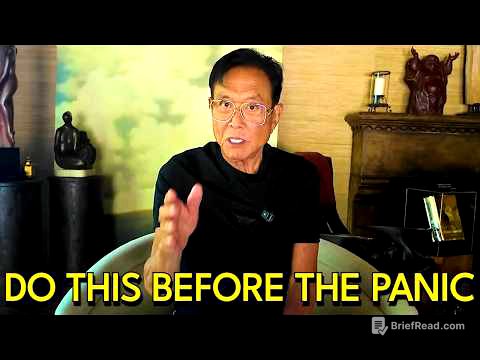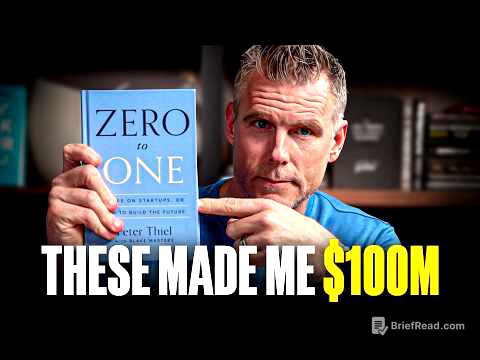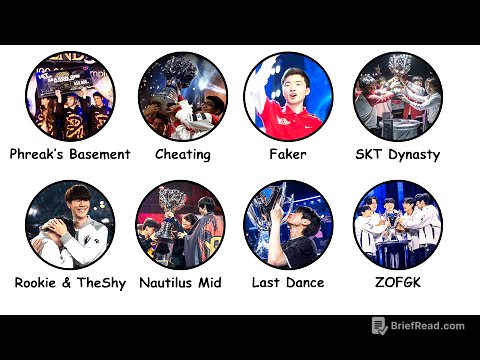TLDR;
This podcast episode features Carolina Jimenez Garcia, a layout artist in VFX, discussing her career journey, the role of layout in filmmaking, and the impact of technology and remote work on the industry. She shares insights into her work on major projects like "The Hobbit" and "Planet of the Apes," and also talks about her passion for filmmaking history, which she shares through her Spanish-language social media channels.
- Carolina's journey in VFX, from Spain to Canada, working on major films like "The Hobbit" and "Planet of the Apes."
- The role of layout in VFX, including camera work, set dressing, and animation blocking.
- The impact of remote work on productivity and work-life balance in the VFX industry.
- Carolina's passion for filmmaking history and her Spanish-language social media channels.
What to expect and Intro [0:00]
The host introduces the podcast and the guest, Carolina Jimenez Garcia, a layout artist in VFX. Carolina will share her experiences and insights into the world of VFX.
Meet Carolina [2:25]
Carolina introduces herself as a layout artist in VFX for movies and TV shows, originally from Spain but now living in Vancouver, Canada. She has traveled the globe for work, including stints in Madrid, Australia, London, and New Zealand. She feels fortunate to have a job that allows her to travel, learn languages, and experience different cultures.
He's a pandemic dog [5:47]
Carolina mentions she got a dog during the pandemic because working from home made it possible to care for a pet.
Layout and overview of the department [6:48]
Carolina explains that layout is often misunderstood, but its main responsibility is the camera. In cases with tracked cameras, they might only make minor adjustments. However, in fully CG shots, they have complete freedom to place and animate the camera. They also handle set dressing and animation blocking, moving elements like chess pieces without detailed animation. The layout department focuses on the composition of the shot, ensuring everything moves at the right speed and place, which then serves as a reference for other departments like animation. As artists progress from junior to lead, they gain more responsibilities, eventually supervising teams and training juniors in both artistic and technical aspects of the pipeline.
The start of Carolina's Career [12:29]
Carolina studied animation in Madrid, where she learned a bit of everything due to limited resources. This generalist background was beneficial for her layout work. She initially panicked because she liked all aspects of animation and didn't know which to choose, but layout turned out to be a good fit as it requires a bit of everything to present scenes to the director.
Software used in Layout [15:16]
Carolina primarily uses Maya in layout. She started with 3D Studio Max during her studies and first movie, "Planet 51," but switched to Maya for VFX work. While Scanline also uses 3D Studio Max for fluid simulations in lighting, layout mainly relies on Maya. She is uncertain if real-time technology will be implemented in their workflow with Maya. As a lead, she is curious and wants to understand what might come their way.
OKinGrafia - Carolina's filmmaking channel [18:03]
Carolina has a Spanish-language Twitter channel, OKinGrafia, with over 70,000 followers, where she shares her passion for filmmaking history and technology. She investigates how technology evolves and shares it with others interested in the same things.
A snippet from OKinGrafia (Spanish) [19:50]
A brief audio clip in Spanish from Carolina's channel, OKinGrafia, is played.
Carolin'a research for her content channels [20:15]
Carolina explains that she researches new technologies, like those used in "The Mandalorian," to understand and explain them in a way that's easy to follow. She does this in Spanish to provide information to the Spanish-speaking community, as there is often more information available in English. She also differentiates her social media platforms, using Instagram for personal content and Twitter for filmmaking-related topics.
Favourite Project to Work on: The Hobbit Trilogy [24:06]
Carolina's favorite project was "The Hobbit" trilogy because seeing the extended edition DVDs for "The Lord of the Rings" inspired her to pursue a career in filmmaking. Getting to work on "The Hobbit" with Weta in New Zealand, the same team that inspired her, was a dream come true.
Taking those first steps in the industry [26:39]
Carolina discusses the challenges of starting in the industry, where it's difficult to get hired without prior experience. She emphasizes the importance of persistence and highlights that sometimes companies hire juniors at the end of a production when they need a final push. Once you're in the industry, it becomes easier to find other opportunities.
Planet of the Apes [28:04]
Carolina recalls that the set dressing for the California street scene in "Planet of the Apes" was challenging. The layout team had to add vines, grass, and debris to create the look of an abandoned Los Angeles street.
When your work gets cut from the movie [30:20]
Carolina shares that it's common for entire shots or sequences to be cut from a movie during editing. She emphasizes that this happens to everyone and is just part of how movies are made.
Overtime and keeping the team happy [31:59]
Carolina notes that the industry is improving in terms of overtime pay and work-life balance. She believes that keeping the team well-cared for and happy leads to better results.
Working in different countries [33:01]
Carolina finds that the work culture varies more between studios than between countries. She has worked in Spain, Australia, New Zealand, and Canada, and each studio has its own unique work ethic. However, the people are often the same, with coworkers from all around the world.
Different perspectives on filmmaking [38:23]
Carolina appreciates when movies offer different perspectives and aren't just Hollywood-dominated. She gives "Mad Max: Fury Road" as an example of an amazing movie made by an Australian filmmaker that offers a refreshing take.
Typical working day and working from home [39:20]
Carolina's day-to-day work has changed a lot due to the pandemic. Now that she's working from home, she tries to make an effort to get out, exercise, and socialize. She misses the coffee breaks and feedback from working physically with her workmates.
Why working from home is more productive [41:15]
Carolina finds that working from home is more productive because there's no commute, fewer distractions, and the ability to listen to meetings while working. She also finds it easier to do overtime at home.
Blended working [44:05]
Carolina mentions that people have started going back to the office, but it's still a mix of working in the office two or three times a week and working from home two or three times a week.
Vancouver [45:24]
Carolina describes Vancouver as a small city where you can walk from side to side in half an hour.
Are Leads involved in recruitment [46:47]
Carolina explains that as a lead, she is not directly involved in recruitment. However, supervisors may ask for her opinion if they are considering hiring someone she has worked with or knows.
Maya, custom tools and the pipeline [47:55]
Carolina uses Maya with custom tools tailored for their pipeline. The pipeline department programs these tools, and artists work hand-in-hand with them to improve and test the tools.
Layout for Animation vs Live-Action [51:00]
Carolina explains that the workflow is the same for animation and live-action, except that in animation, they don't have the restriction of a camera track and have more freedom.
The hierarchy and approval process [52:02]
Carolina describes the approval process, where artists show their work to the lead, who then shows it to the studio VFX supervisor. The studio VFX supervisor shows the work to the client VFX supervisor, who is in direct contact with the director.
Reshoots [53:49]
Carolina shares that sometimes they have to start over when reshoots change the movie significantly.
Where to find Carolina online [55:06]
Carolina shares her social media handles, including Twitter, Instagram, and YouTube, where people can find out more about her and her work.
Goodbye and outro [56:56]
The host thanks Carolina for coming on the podcast.









